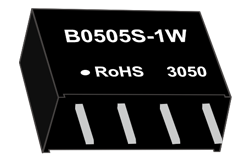nyheder
Design and Analysis of a Bidirectional DC-DC Converter for Energy Storage Systems
Author: ZYG Power Module Time: 2023-6-19
Energy storage systems (ESS) have been gaining popularity in recent years due to the increased need for renewable energy integration and grid stabilization. One of the key components of an ESS is the bidirectional DC-DC converter, which is responsible for converting the DC voltage of the battery to the appropriate voltage level for the load or grid, and vice versa. In this article, we will discuss the design and analysis of a bidirectional DC-DC converter for energy storage systems.
Design Considerations:
The design of a bidirectional DC-DC converter for ESS involves several considerations. Some of the key design parameters are:
1. Power rating: The power rating of the converter should be chosen to match the power requirements of the load or grid.
2. Voltage rating: The voltage rating of the converter should be chosen to match the voltage level of the battery and the load or grid.
3. Efficiency: The converter should be designed to operate at high efficiency to minimize power losses.
4. Size and weight: The converter should be designed to be compact and lightweight to reduce the overall size and weight of the ESS.
5. Control scheme: The converter should be designed to operate under different control schemes, such as voltage or current control, depending on the application.
6. Protection features: The converter should be designed with protection features to prevent damage from over-voltage, over-current, or over-temperature conditions.
Design of the Bidirectional DC-DC Converter:
The bidirectional DC-DC converter consists of two stages: the boost stage and the buck stage. The boost stage is responsible for stepping up the voltage of the battery to the desired voltage level for the load or grid, while the buck stage is responsible for stepping down the voltage from the load or grid to the battery voltage level. The overall operation of the converter is controlled by a digital signal processor (DSP) which implements a pulse-width modulation (PWM) algorithm.
The boost stage consists of a boost inductor, a boost switch, and a diode. During the boost mode, the boost switch is turned on, and the inductor stores energy from the battery. When the switch is turned off, the energy stored in the inductor is transferred to the load or grid through the diode. The output voltage of the boost stage is given by:
Vout = Vin x (1 + D)
where Vin is the input voltage from the battery, D is the duty cycle of the PWM signal, and Vout is the output voltage.
The buck stage consists of a buck inductor, a buck switch, and a diode. During the buck mode, the buck switch is turned on, and the inductor stores energy from the load or grid. When the switch is turned off, the energy stored in the inductor is transferred back to the battery through the diode. The output voltage of the buck stage is given by:
Vout = Vin x (1 – D)
where Vin is the input voltage from the load or grid, D is the duty cycle of the PWM signal, and Vout is the output voltage.

Simulation and Analysis:
To evaluate the performance of the bidirectional DC-DC converter, we conducted simulations using MATLAB Simulink. The converter was designed to operate at a power rating of 5 kW and a voltage rating of 400 V. The efficiency of the converter was evaluated under different operating conditions, such as varying load and battery voltages.
The simulation results showed that the converter achieved an efficiency of over 95% under most operating conditions. The converter was also found to be stable under different control schemes, such as voltage and current control. Furthermore, the converter was found to be robust against over-voltage, over-current, and over-temperature conditions due to the implemented protection features.
Conclusion:
In this article, we discussed the design and analysis of a bidirectional DC-DC converter for energy storage systems. The converter was designed to operate at a power rating of 5 kW and a voltage rating of 400 V. The simulation results showed that the converter achieved high efficiency and was stable under different operating conditions. The implemented protection features also ensured robust operation of the converter. The designed bidirectional DC-DC converter can be used in various energy storage applications, such as renewable energy integration and grid stabilization.
Tidligere: AC to DC Converter Module – 12V Output
Næste: 120V AC to 12V DC Converter: Transforming Voltage for Efficient Power Supply
relevant information
-
2023-12-21
DC DC Power Supply Module: An Essential Component for Efficient Power Conversion
In today's technology-driven world, the demand for efficient power conversion is increasing rapidly. From portable electronic devices to electric vehicles, the need for reliable and compact power supply modules is crucial. One such significant component that plays a vital role in power conversion is the DC DC power supply module. In this article, we will dive deeper into the workings, applications, and benefits of this essential module. What is a DC DC Power Supply Module? A DC DC power supply module is an electronic device that converts one level of DC voltage to another level of DC voltage. It takes in a direct current (DC) input from a power source and delivers a regulated output voltage suitable for a specific...
Se detaljer -
2023-9-16
Efficient and Versatile: Introducing the 850W Modular Power Supply
Having a reliable and efficient power supply is crucial for any computer system. Whether you are a casual user, a professional gamer, or a content creator, you need a power supply that can deliver consistent and clean power to support your demanding tasks. Introducing the 850W Modular Power Supply – a versatile solution that meets the needs of even the most power-hungry systems. One of the standout features of the 850W Modular Power Supply is its impressive efficiency. With an 80 Plus Gold certification, it offers up to 90% efficiency, meaning that less power is wasted as heat. This not only helps to reduce your electricity bills but also ensures that your components are being supplied with stable power, resulting...
Se detaljer -
2023-4-23
Building a 120 Volt AC Power Supply for 3 Volt DC Output
Introduction When it comes to electronic devices, the power supply is an essential component that ensures the device receives the necessary power to operate correctly. In this article, we will discuss how to build a 120-volt AC power supply that provides 3-volt DC output. Designing the Power Supply Before we begin building the power supply, we need to design it first. The power supply consists of two main stages: the AC to DC conversion and voltage regulation. AC to DC Conversion To convert AC power to DC power, we will use a bridge rectifier. A bridge rectifier is a circuit that converts AC power into pulsating DC power. The circuit consists of four diodes arranged in a bridge configuration, hence...
Se detaljer -
2023-6-1
SM Series: The Ultimate AC DC Power Supply Solution
In today's ever-evolving technological landscape, the demand for power supplies that are both reliable and efficient has never been higher. That's where the SM Series comes in. This innovative AC DC power supply solution is specifically designed to provide top-of-the-line performance and flexibility for a wide range of applications. At the heart of the SM Series is an advanced microprocessor-controlled design that ensures precise regulation of output voltage and current. This results in stable, clean power that is free from interference, noise, and other unwanted artifacts. Additionally, the SM Series features a high power density design that allows it to deliver up to 3kW of power in a compact form factor, making it ideal for space-constrained applications. One of the...
Se detaljer -
2023-5-10
Industrial AC-DC Converter: Reliable Power Conversion for Your Business Needs
In the world of industrial business, having a reliable power source is essential. Equipment and machinery require a steady and stable flow of electricity to function properly and efficiently. This is where an industrial AC-DC converter can come in handy. An AC-DC converter is a device that converts alternating current (AC) power into direct current (DC) power. This is important because many industrial machines and equipment require DC power to operate. By converting AC power to DC power, an AC-DC converter can provide a reliable power source for a wide range of industrial applications. One of the key advantages of an industrial AC-DC converter is its ability to provide a consistent and stable output voltage. This is important because many...
Se detaljer -
2023-6-4
SPM Series AC DC Converter: Efficient Power Conversion Solution for Diverse Applications
In today's modern world, power conversion solutions play a vital role in ensuring the efficient and reliable operation of various electronic devices and systems. With the increasing demand for energy-efficient solutions, the need for high-performance AC DC converters has become more important than ever before. The SPM series AC DC converter is a power conversion solution that offers exceptional performance, efficiency, and versatility. Developed by TDK-Lambda, a leading manufacturer of power supplies, the SPM series is designed to meet the demanding requirements of industrial, medical, and communications applications. One of the key features of the SPM series is its high efficiency. With its advanced topology and innovative design, the SPM series can achieve efficiency levels of up to 94%, making...
Se detaljer


















